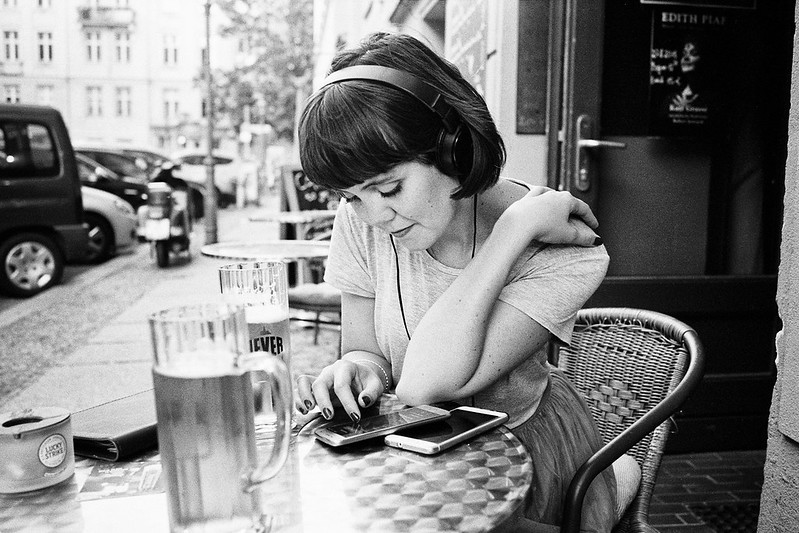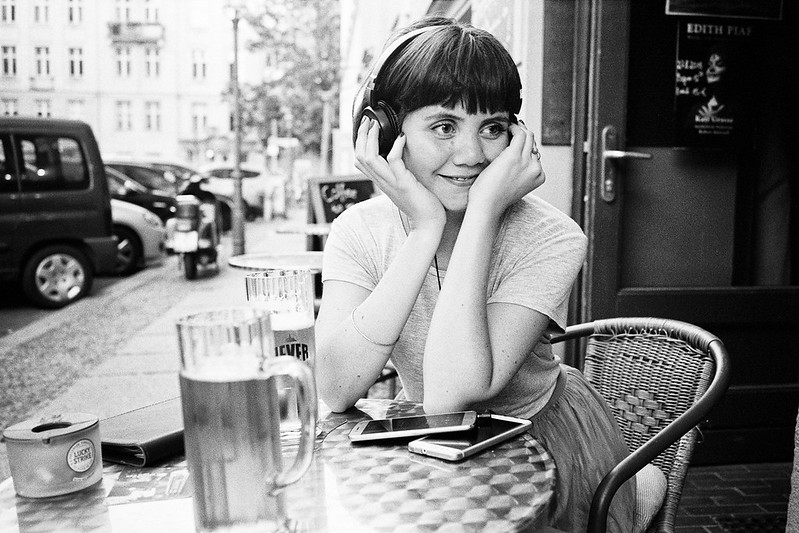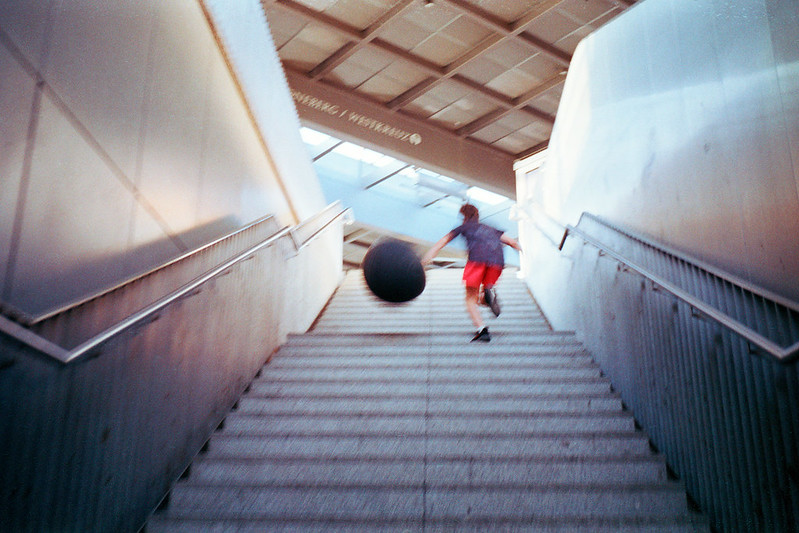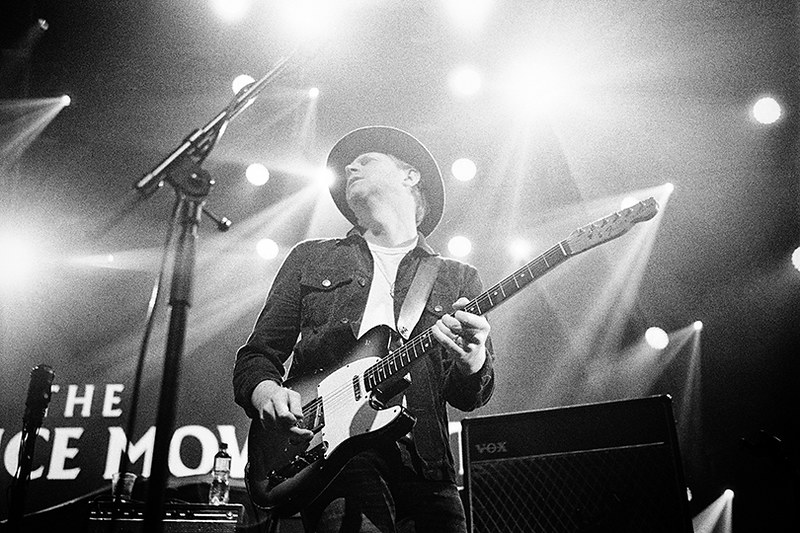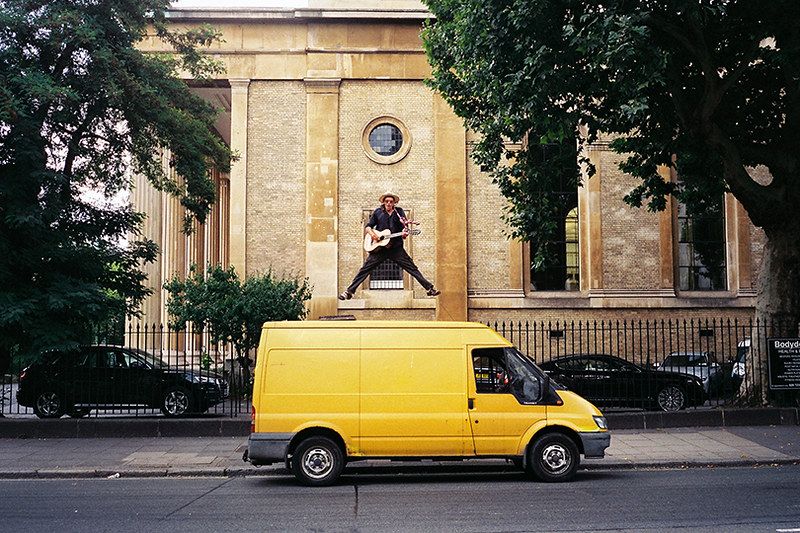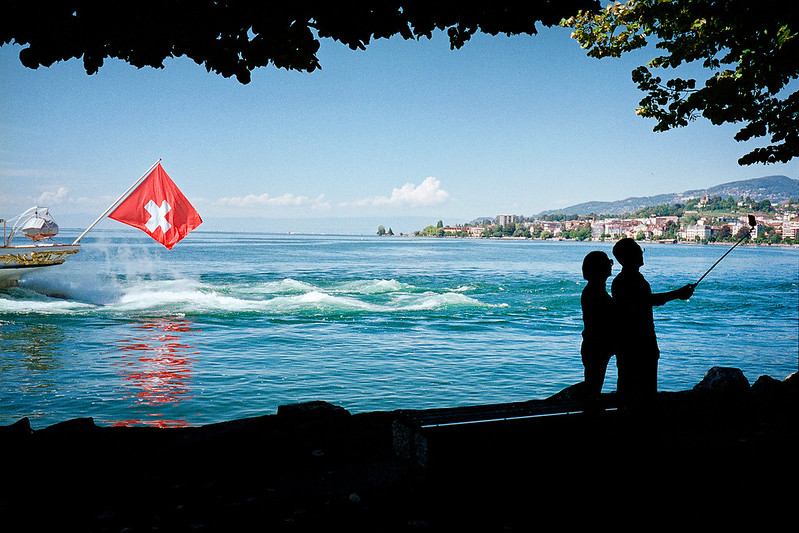rfaspen
[insert pithy phrase here]
Huss,
I think "bold" might have been a better word to use. In use closer shots that are tight and fill the frame that Simon displays in his shots are not so easy. Stopping down is a bonus.
The lenses you mention are of modest speed. In my case using my 35/1.8 Nikkor in LTM for a close tight shot would have limitations if say I used F2.0 or F1.8. Of course not focusing on a close subject offers more lattitude. Simon seems to do very well in pushing the closer limits, and this is why I tried to compliment his skill.
Anyways I framed my response with my kit in mind, and I did not frame what I am now mentioning.
Let's say I'm rather shy of using a 35 on my MDa. ....and I have a horrible "hit rate" with my Rollei 35. "Dismal" is a better term I think.
15 or 21 are sweet spots for me. I seem to be able to manage both focus (DOF) and my shaky handholding tendencies with those lenses.
bucs
Well-known
I use a Leica If and a 28mm CV. It's perfect for snapshots!
Rob-F
Likes Leicas
And the M1 is a great minimalist camera as well; perfect with a 35mm Summaron. Everything you need, nothing you don't.
Huss
Mentor
Let's say I'm rather shy of using a 35 on my MDa. ....and I have a horrible "hit rate" with my Rollei 35. "Dismal" is a better term I think.
I've used my Rollei Sonnar 40 2.8 on my MdA (and 1f), and yes the hit rate kinda plummets if you shoot it anywhere near wide open.
For practice I put it on my M240 and shot like I would have with the MdA - scale focusing. Again, hit rate sucked unless stopped down.
It's for that reason why I bought an Agfa Optima 1535 instead of a Rollei 35 - the sharpness of the lens is not relevant unless you nail focus. And so the images from my Agfa are way sharper than scale focusing with a Rollei.
Of course, I bought a 'broken' Rollei 35 anyway with thoughts of fixing it (because the black body is in rare undented shape), but I think I'll just sell it along for someone else to fix/use for parts.
Calzone
Gear Whore #1
Let's say I'm rather shy of using a 35 on my MDa. ....and I have a horrible "hit rate" with my Rollei 35. "Dismal" is a better term I think.
15 or 21 are sweet spots for me. I seem to be able to manage both focus (DOF) and my shaky handholding tendencies with those lenses.
R,
I miss my 21 SEM. I will get another one: one-day. Know that I own a Plaubel 69W "Pro-Shift." Pretty much the 47/5.6 is a 21mm FOV but this is a 6x9 120 camera with shift capabilities. Very cool to have both 6x9 and 135 21mm FOV.
For me shooting a 28/3.5 Black Canon LTM is "bold."
Not a problem with an ultra-wide.
Cal
SimonSawSunlight
Simon Fabel
SimonSawSunlight
Simon Fabel
cwalton
Established
Really lovely stuff. I have been a long time admirer of your work, especially with the humble (but excellent) 35mm f2.5!
I am interested to read that you don't often use a light meter. I use an M6 currently and regard myself as fairly reliant on the meter. I have, however, always wanted to learn to be less reliant on it. Could you perhaps explain how you learnt to work without one? I know there is loads on this out there already but would be interested in your personal take.
Cheers and keep up the good work!
I am interested to read that you don't often use a light meter. I use an M6 currently and regard myself as fairly reliant on the meter. I have, however, always wanted to learn to be less reliant on it. Could you perhaps explain how you learnt to work without one? I know there is loads on this out there already but would be interested in your personal take.
Cheers and keep up the good work!
rfaspen
[insert pithy phrase here]
Its not Berlin 
I'd love to visit Berlin and try out my MDa technique
But, I did take my brother to lunch at the local taco spot. Its unfortunately located in a mini-mall. Clearly, we liked the tacos
Leica MDa, CV 15/4.5 (LTM), Fomapan 100, Caffenol

I'd love to visit Berlin and try out my MDa technique
But, I did take my brother to lunch at the local taco spot. Its unfortunately located in a mini-mall. Clearly, we liked the tacos
Leica MDa, CV 15/4.5 (LTM), Fomapan 100, Caffenol

SimonSawSunlight
Simon Fabel
Really lovely stuff. I have been a long time admirer of your work, especially with the humble (but excellent) 35mm f2.5!
I am interested to read that you don't often use a light meter. I use an M6 currently and regard myself as fairly reliant on the meter. I have, however, always wanted to learn to be less reliant on it. Could you perhaps explain how you learnt to work without one? I know there is loads on this out there already but would be interested in your personal take.
Cheers and keep up the good work!
that is so very kind of you, thank you very much!
yes, i generally don't carry a light meter and i haven't for ages now. in cases of absolute uncertainty i have used my phone to double check - after i've taken the picture. pointless!
it's not magic or a very impressive skill, it's just a question of routine and habit, like zone focusing or driving stick (hello americans
the film i've been using for almost 10 years now is almost exclusively 400 iso (mostly tri-x) and i find it very difficult to shoot something like portra 160 in a fully manual camera. i tend to forget and just expose at ~400 again. i stopped using and carrying a lightmeter when i realised that i generally knew what it was going to read and when it didn't, i'd make it read what i wanted it to read.
there are plenty of ways to go about this, but like everyone else who does it, i suppose, i developed my own *******ised (really, rff?
1/500 f16-f22 for full on sunlight
1/500 f11 for "regular" / moderate sunlight
1/500 f8 for slightly overcast light, soft evening sun, or against direct sunlight to get a bit of detail in the shadows
1/250 f8 for half-shade, even later evening sun or in the shade of bright buildings on a bright day for example
1/250 f5.6 for regular "open" shade
1/250 f4 for regular shade
1/250 f2.5-f2.8 for dark / late afternoon shade
in darker situations, my reference is always the f1.2 of my 35mm nokton, because that's what i used when i started routinely shooting like this and it gives you a reference all the way to "very dark" / "forget about it, just try to hold still".
1/500 f1.2 // 1/125 f2.5 for very bright artificial / indoor light or early twilight
1/250 f1.2 // 1/60 f2.5 for regular-bright artificial / indoor light or regular twilight
1/125 f1.2 // 1/30 f2.5 (THIS IS THE ONE!
1/60 f1.2 // 1/15 f2.5 for the not-so-bright parts on the berlin underground
1/30 f1.2 // 1/8 f2.5 for badly lit berlin underground platforms or on a busy urban street at night, city lights and so on
1/15 f1.2 // 1/4 f2.5 it's getting to dark to care but you can still focus
1/8 f1.2 // 1/2 f2.5 you can confidently start to consider the "sharpness is a bourgeois concept thread"
1/4 f1.2 // 1s f2.5 use your phone or a candle to see what the focus scale is set to and just ah **** it, it'll look great.
1/2 f1.2 // B f2.5 this is art now.
a lot of people have found it odd that i sometimes look at my hand to determine exposure, but it's basically the same thing people do with their M6 meters. it gives me a reference, because i know what my hand looks like in most of these situations - and you can see what the light looks like at different angles. i realise i am doing it less and less though.
when i'm shooting i generally adjust speed and aperture whenever the light changes, not when i'm about to take a picture, unless i have to of course. same goes for focusing, i try to be as close as possible to the distance i expect to shoot at before raising the camera to my eye. focus tabs are great for that, if you know a lens well enough, you start doing it instinctively without looking at it.
tl;dnr
just start thinking about exposure rather than blindly following your meter.
routine is key.
highlighted speed/aperture combinations are my main references.
iso400 is life.
SimonSawSunlight
Simon Fabel
Leica All Day
Mentor
You are a wild man shooting that camera
SimonSawSunlight
Simon Fabel
You are a wild man shooting that camera
meet me in the jungle.
cwalton
Established
that is so very kind of you, thank you very much!
yes, i generally don't carry a light meter and i haven't for ages now. in cases of absolute uncertainty i have used my phone to double check - after i've taken the picture. pointless!
it's not magic or a very impressive skill, it's just a question of routine and habit, like zone focusing or driving stick (hello americans).
the film i've been using for almost 10 years now is almost exclusively 400 iso (mostly tri-x) and i find it very difficult to shoot something like portra 160 in a fully manual camera. i tend to forget and just expose at ~400 again. i stopped using and carrying a lightmeter when i realised that i generally knew what it was going to read and when it didn't, i'd make it read what i wanted it to read.
there are plenty of ways to go about this, i suppose, but like everyone else who does it i suppose, i developed my own *******ised (really, rff?) sunny16/zone system. i have a couple of references as far as lighting situations go in my head and work from there, depending on what's particular about the situation or whether i want to expose for highlights or faces or whatever.
1/500 f16-f22 for full on sunlight
1/500 f11 for "regular" / moderate sunlight
1/500 f8 for slightly overcast light, soft evening sun, or against direct sunlight to get a bit of detail in the shadows
1/250 f8 for half-shade, even later evening sun or in the shade of bright buildings on a bright day for example
1/250 f5.6 for regular "open" shade
1/250 f4 for regular shade
1/250 f2.5-f2.8 for dark / late afternoon shade
in darker situations, my reference is always the f1.2 of my 35mm nokton, because that's what i used when i started routinely shooting like this and it gives you a reference all the way to "very dark" / "forget about it, just try to hold still".
1/500 f1.2 // 1/125 f2.5 for very bright artificial / indoor light or early twilight
1/250 f1.2 // 1/60 f2.5 for regular-bright artificial / indoor light or regular twilight
1/125 f1.2 // 1/30 f2.5 (THIS IS THE ONE!) for the bright parts on the berlin underground
1/60 f1.2 // 1/15 f2.5 for the not-so-bright parts on the berlin underground
1/30 f1.2 // 1/8 f2.5 for badly lit berlin underground platforms or on a busy urban street at night, city lights and so on
1/15 f1.2 // 1/4 f2.5 it's getting to dark to care but you can still focus
1/8 f1.2 // 1/2 f2.5 you can confidently start to consider the "sharpness is a bourgeois concept thread"
1/4 f1.2 // 1s f2.5 use your phone or a candle to see what the focus scale is set to and just ah **** it, it'll look great.
1/2 f1.2 // B f2.5 this is art now.
a lot of people have found it odd that i sometimes look at my hand to determine exposure, but it's basically the same thing people do with their M6 meters. it gives me a reference, because i know what my hand looks like in most of these situations - and you can see what the light looks like at different angles. i realise i am doing it less and less though.
when i'm shooting i generally adjust speed and aperture whenever the light changes, not when i'm about to take a picture, unless i have to of course. same goes for focusing, i try to be as close as possible to the distance i expect to shoot at before raising the camera to my eye. focus tabs are great for that, if you know a lens well enough, you start doing it instinctively without looking at it.
tl;dnr
just start thinking about exposure rather than blindly following your meter.
routine is key.
highlighted speed/aperture combinations are my main references.
iso400 is life.
This is awesome - thank you so much for taking the time to write it! I have started trying to pre-guess and then confirm exposure with the M6's meter rather than relying on it so much and that seems to be helping my 'exposure awareness'. Next time the meter battery goes I might leave it for a couple of rolls and see how far off I am.
And yeah, messing about with different film speeds is just so confusing!
Thanks again.
SimonSawSunlight
Simon Fabel
This is awesome - thank you so much for taking the time to write it! I have started trying to pre-guess and then confirm exposure with the M6's meter rather than relying on it so much and that seems to be helping my 'exposure awareness'. Next time the meter battery goes I might leave it for a couple of rolls and see how far off I am.
And yeah, messing about with different film speeds is just so confusing!
Thanks again.
i'm glad you found it helpful!
here's more pictures (grain sponsored by Tom's very old arista premium.

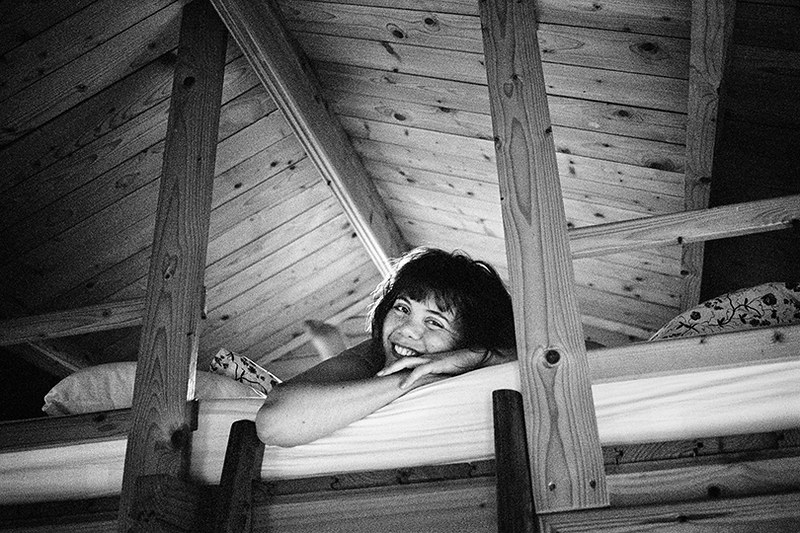

SimonSawSunlight
Simon Fabel
SimonSawSunlight
Simon Fabel
whoups, sorry.
Last edited:
lxmike
M2 fan.
That´s why some of us use Rollei 35, Minox 35 or Olympus Pen S ... ;-)
and the images you produce are inspiring
SimonSawSunlight
Simon Fabel
jonal928
Well-known
Leica MDa - You will not find more reliable and solid than this Leica.
Completely the camera choice to take with you to an isolated island.
Completely the camera choice to take with you to an isolated island.
Share:
-
This site uses cookies to help personalise content, tailor your experience and to keep you logged in if you register.
By continuing to use this site, you are consenting to our use of cookies.


